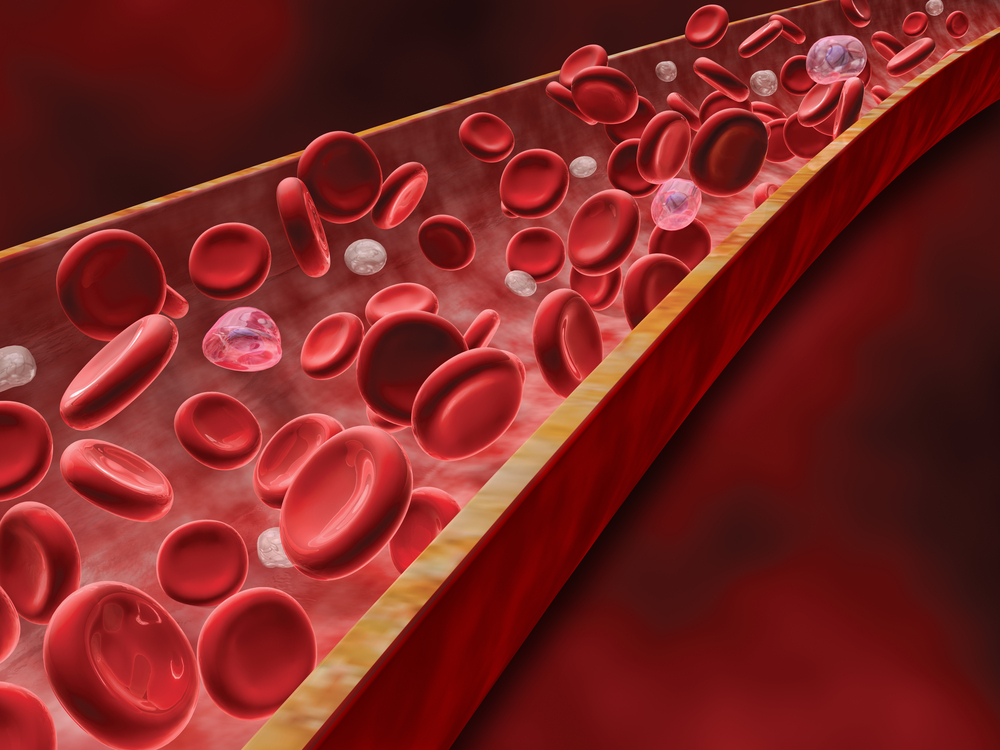High Levels of Pro-Inflammatory CX3CL1 Linked to Lung Fibrosis in Scleroderma Patients

High levels of CX3CL1, a pro-inflammatory molecule, in the lung tissue and blood are linked with pulmonary dysfunction in scleroderma (SSc) patients, a study reports.
The study, “Augmented concentrations of CX3CL1 are associated with interstitial lung disease in systemic sclerosis,” was published in the journal PLOS One.
Pulmonary complications, specifically interstitial lung disease (ILD) and pulmonary hypertension (PH), increase the risk of death in SSc patients by two to seven times. While the lung disease(s) may progress slowly and can potentially be treated with targeted therapies, more progressive forms can lead to right heart failure or pulmonary fibrosis with respiratory failure and death.
However, the mechanisms underlying SSc-PH and SSc-ILD are poorly understood.
CX3CL1, also known as fractalkine, is a pro-inflammatory signaling molecule (a chemokine) that promotes the infiltration and retention of certain immune cells in the inner wall of blood vessels, called the endothelium.
CX3CL1 and its receptor protein, CX3CR1, are thought to play a role in chronic inflammatory diseases, such as pulmonary fibrosis, and autoimmune diseases, such as rheumatoid arthritis, Sjögren’s syndrome, and systemic lupus erythematosus. Researchers therefore hypothesized that the CX3CR1/CX3CL1 axis could play a role in SSc associated with pulmonary diseases.
To test their hypothesis, researchers quantified the levels of CX3CL1 in lung tissue collected from 12 SSc-ILD patients (mean age 39.3 years) at the time they were underwent lung transplantation at the University of California, Los Angeles (UCLA), and from 12 healthy donors (control group).
The team also measured CX3CL1 levels in blood samples from Norway’s Oslo University Hospital SSc cohort (292 patients) and 100 healthy controls.
All 12 UCLA patients had ILD, with 55.1 percent showing signs of pulmonary fibrosis. At the time of the transplant, 70 percent of the patients were diagnosed with PH.
The lung function of these patients showed a marked annual decline, as shown by a mean reduction of 7.7 percent in their forced vital capacity (FVC, a measure of lung function) before the lung transplant, and/or a 19.3 percent reduction in diffusing capacity for carbon monoxide (DLco, another parameter of lung function).
Results showed that the levels of CX3CL1 were significantly increased in lung samples from patients with SSc-ILD compared with healthy lung donors — 0.97 ng/mL versus 0.18 ng/mL, respectively.
The levels of CX3CL1 showed a significant correlation with DLco predicted at the time of transplant, but to no other lung function parameters or skin score, nor to mortality rate or gastrointestinal symptoms.
Researchers also observed that both epithelial cells in lung tissue and all blood cells with a single nucleus (mononuclear cells) were the source of CX3CL1, while its receptor CX3CR1 was mainly present in mononuclear cells.
In blood samples from the 292 SSc Oslo cohort, researchers also detected significantly increased concentrations of CX3CL1 (2.0 ng/mL) compared to healthy controls (1.1 ng/mL).
The team also found that the concentration of CX3CL1 in the blood was associated with anti-topoisomerase I antibodies (ATA; known to be associated with ILD), and correlated with the extent of fibrosis, as shown by high-resolution CT scans of the chest. Moreover, increased levels of CX3CL1 in the blood correlate with SSc-ILD progression.
Overall, “we have demonstrated an association between elevated protein levels of CX3CL1 and progressive SSc-ILD and have shown that within the lungs, CX3CL1 is predominantly localized with epithelia and its receptor, CX3CR1, to infiltrating interstitial mononuclear cells,” researchers stated.
“These results suggest that CX3CR1/CX3CL1 biological axis may be a driver of dysregulated autoimmunity that favors SSc-ILD and may have an ability to predict SSc-ILD as well as its progression,” the team concluded.






